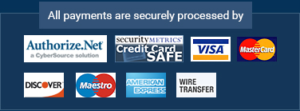In this assignment, you are the game show host for the Diversity game (attached PowerPoint).
Gather two or three friends or family members as contestants. If you have more, divide them into two groups. Use a piece of paper to keep score and print the second page of the presentation to mark which questions were incorrectly answered.
1. Open the PowerPoint Diversity game. Start the Slideshow to begin.
Read these instructions to the teams:
- One person (or team) will randomly be selected to choose the first question category and level. Once a question is read aloud, all person (or team) will debate the answer. One team will raise a hand or use his or her assigned team noisemaker when the team is ready to answer.
- I will call on the first team to respond. If they answer correctly, they will receive the number of points indicated, and they will choose the next question category and level. If their answer is incorrect, I will call upon the second team and so on.
- In the event that no team answers the question correctly, I will give the correct response. The team that chose last still has control of the board and should choose the next question.
- Scores will be recorded and the winner announced at the end of the round. There will be one round of 25 questions (or two rounds of 25 questions each if you also play Double Diversity).
2. Once you have the “board” displayed, and the first team has selected their question, click one of the cells to reveal a question.
3. To return to the main board, click on the “Diversity” icon in the lower right corner of the screen.
4. If the game is close, use the Double Diversity board. To advance to the Double Diversity board, click the logo in the top-right (above “The Amazing Race”) of the main game board. This will take you to the Double Diversity! board (Board 2).
After playing the game, discuss with the contestants why they believe they missed some of the questions.
Write a 500-word essay that evaluates the game play, your thoughts on why questions were correctly and incorrectly answered, and what you learned from the game.
Assignment – Part 2:
Select three of the following five prompts. Write a response of at least 300 words for each of the three prompts:
- What was one of your earliest experiences concerning race? Describe the experience, how you felt, and how the experience was handled. If you could rewrite that experience, how would you change it and/ or how it was handled?
- Explain the concept of “best practice” and what it means in the context of diversity strategy. What are the challenges of developing and implementing best practices? What are the potential benefits?
- What are some of the ways that Pitney Bowes has aligned its goals for diversity with a market-driven approach to meeting its customers’ needs? Be specific.
- What is/are the common theme(s) between the Bowman exercise and the Miner article?
- Review the author’s list of 46 examples of white privilege. Critically evaluate which of these indicate white privilege and which might be artifacts of other forces (market forces, personal choice, etc.).
Submit both Assignments in the same document.
Assignment Expectations:
- Length:
- 1400-1750 words (5-7 pages); answers must thoroughly address the questions in a clear, concise manner

